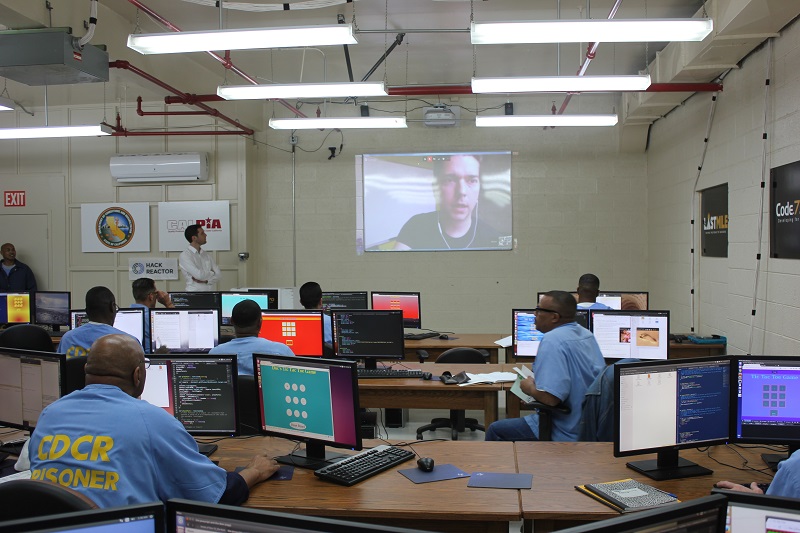 Courtesy of Ars Technica’s Cyrus Farviar
Courtesy of Ars Technica’s Cyrus Farviar
Incarceration rates in the U.S. have skyrocketed from approximately 500,000 in the mid-70s to 2,226,832 in 2010, according to the Centre for Prison Studies’ (ICPS) last estimate. Even worse, the Bureau of Justice Statistics points out that 75% of former prisoners in 30 states are arrested within five years of release, and 80% within a decade. The primary cause of this revolving door effect is the lack of education, experience, and opportunity available to former inmates, making it very difficult for them to reintegrate into a working society.
Two Silicon Valley veterans — Chris Redlitz, a venture capitalist, and his wife Beverly Parenti, a tech executive — have started a program with the San Quentin State Prison to teach coding to a group of 18 inmates with the goal of imparting the necessary skills to land these guys jobs before they’ve even finished serving their terms.
The program is called “Code 7370” and teaches HTML, CSS, and JavaScript over the course of a four-day-per-week, eight-hour-per-day, six-month schedule; Code 7370 began in October 2014 with the rudimentary task of teaching inmates how to identifying the various computer parts and how to use them, as very few had any prior knowledge. Prisoners use discarded state office computers that have been refurbished and outfitted with the Ubuntu OS.
“Specifically today we're learning how to use JavaScript to make a Tic-Tac-Toe game,” said Aly Tamboura, an inmate who served eight years of a 14-year sentence, when speaking with reporters on the day that local media was invited to attend a class session. “It's difficult, but I got these ah-ha moments, and I believe that's what the course is designed to do.”
Classes are conducted virtually through the use of Google Hangouts, which allows the instructor to communicate face-to-face with the inmates. If successful, the model could spread throughout California.
Such an ambitious undertaking is not without its challenges. First of all, the convicts are competing for jobs with younger programmers who are university educated and have been using technology since childhood. Secondly, employers require that applicants disclose whether or not they’ve committed any felonies, making the prospect of getting hired extremely unlikely with all due respect. And last of all, sending a completed project to a client is extremely difficult given the lack of Internet access on the inside, requiring supervisor intervention.
As enthusiastic and unrealistic as the project’s end goal may be, at least it gives inmates a foundation to develop lifelong skills should they so choose to continue pursuing them. With the vast amount of freely available resources online, motivation is the only limiting factor once they’ve finished their sentence — that and a basic computer.
Source: Ars Technica
Advertisement
Learn more about Electronic Products Magazine





